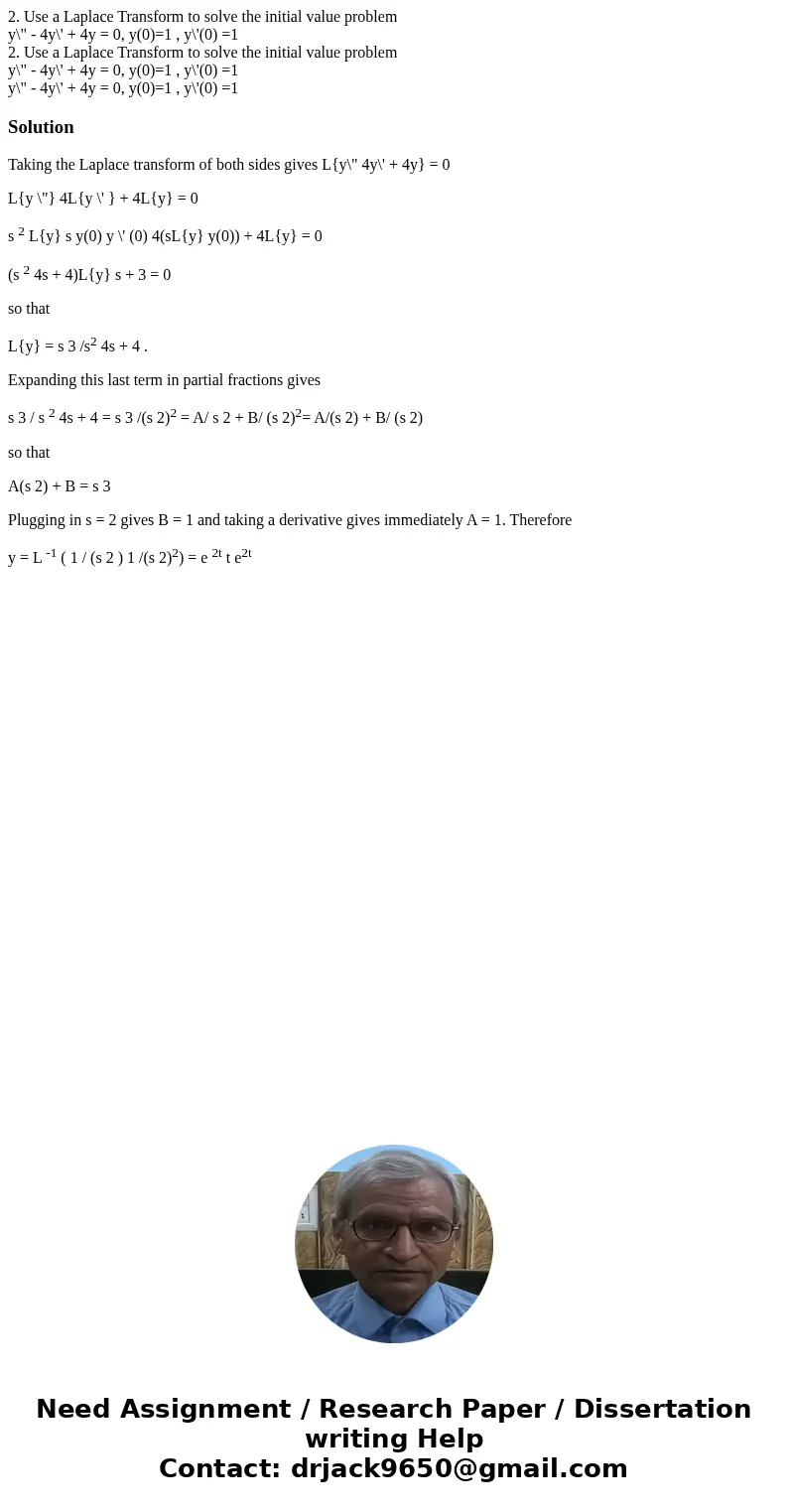2 Use a Laplace Transform to solve the initial value problem
2. Use a Laplace Transform to solve the initial value problem
y\" - 4y\' + 4y = 0, y(0)=1 , y\'(0) =1
2. Use a Laplace Transform to solve the initial value problem
y\" - 4y\' + 4y = 0, y(0)=1 , y\'(0) =1
y\" - 4y\' + 4y = 0, y(0)=1 , y\'(0) =1
Solution
Taking the Laplace transform of both sides gives L{y\" 4y\' + 4y} = 0
L{y \"} 4L{y \' } + 4L{y} = 0
s 2 L{y} s y(0) y \' (0) 4(sL{y} y(0)) + 4L{y} = 0
(s 2 4s + 4)L{y} s + 3 = 0
so that
L{y} = s 3 /s2 4s + 4 .
Expanding this last term in partial fractions gives
s 3 / s 2 4s + 4 = s 3 /(s 2)2 = A/ s 2 + B/ (s 2)2= A/(s 2) + B/ (s 2)
so that
A(s 2) + B = s 3
Plugging in s = 2 gives B = 1 and taking a derivative gives immediately A = 1. Therefore
y = L -1 ( 1 / (s 2 ) 1 /(s 2)2) = e 2t t e2t

 Homework Sourse
Homework Sourse